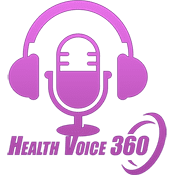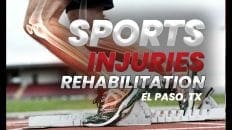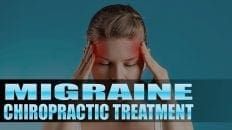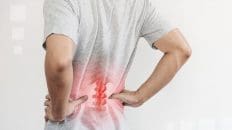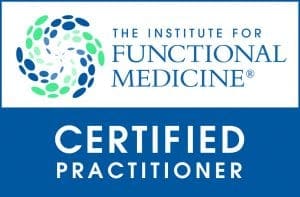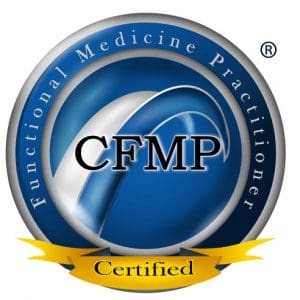Uncover the relationship between somatovisceral disorders from head injuries and overall health. Key insights for better awareness and care.
Table of Contents
Understanding Head Injuries and Their Impact on the Brain-Body Connection Through Somatovisceral Disorders
Beyond mere bumps or bruises, head trauma may alter how your body functions and feels. Consider how a brain injury might result in persistent exhaustion, gastrointestinal issues, or even difficulty concentrating on daily duties. This occurs through the brain-body link, in which messages from the brain influence the muscles and organs, and vice versa. When a brain injury disrupts this connection, it may lead to somatovisceral diseases, illnesses in which your internal organs are affected by bodily discomfort or problems with your muscles and skin. This article will describe these conditions, discuss their connection to brain trauma, and discuss how external variables like stress or pollution might exacerbate them. Drawing on actual clinical insights from professionals like Dr. Alexander Jimenez, we will also examine straightforward, non-surgical solutions to address these issues.
This information is intended for anybody coping with the aftereffects of a head injury, including those sustained in a fall, auto accident, or sports collision. You can take steps to feel better without depending on medications or surgery if you are aware of these links. Key concepts are highlighted with keywords such as “somatovisceral disorders,” “head injury symptoms,” and “brain-body connection” to help you locate additional online resources.
What Are Somatovisceral Disorders?
Somatovisceral illnesses are characterized by a breakdown in communication between the internal organs, such as the heart, intestines, and lungs, and the external components of the body, such as the muscles, skin, and bones. “Visceral” refers to the soft organs within you, whereas “somato” denotes body or muscle-related. Normally, nerves that transmit data back and forth allow these systems to function seamlessly together. When anything goes wrong, such as when your back muscles get irritated and send the incorrect signals to your stomach, it may cause discomfort, swelling, and other problems distant from the initial issue.
Comparable to a bad wiring in a home, a short in one room might cause lights in another to flicker. Symptoms of these illnesses often include functional impairments inconsistent with the site of damage or inexplicable discomfort. Because nerves in the spine link the neck muscles, for instance, tense neck muscles from bad posture may induce stomach distress. Studies reveal that this occurs via somatovisceral reflexes, in which organ changes are triggered by stress (Jänig, 2016). According to the American Psychiatric Association (2013), doctors refer to these problems as somatic symptom disorder (SSD) when they feature persistent concern about bodily sensations, combining bodily cues with emotional stress.
Somatovisceral problems might manifest as stomach cramping after a stressful day or chest tightness during worry. Millions are impacted, and they often coexist with ailments like chronic tiredness or irritable bowel syndrome (IBS). Knowing this makes it easier to understand why addressing surface pain alone isn’t always sufficient; the whole circuitry has to be fixed.
In his practice, chiropractor Dr. Alexander Jimenez, who has been providing non-surgical therapy for more than 30 years, often observes this. “Unbalances in the spine can send mixed signals to organs, causing widespread discomfort,” he says. According to his wellness podcasts and clinic materials, he takes a functional medicine approach that emphasizes structural changes and other underlying factors to restore balance (Jimenez, 2024a).
The Link Between Head Injuries and Somatovisceral Disorders
Even minor head traumas like concussions may have a significant impact on the brain-body link. The brain bounces within the skull when your head is shaken, resulting in a mild traumatic brain injury (mTBI). Somatovisceral problems result from disruptions in the nerve pathways connecting your brain to your body. According to studies, somatic symptoms and related disorders (SSRD), which are characterized by severe, ongoing bodily aches that have no apparent explanation, are more common in individuals with mTBI (Jobin et al., 2025).
Why does this occur? Your pulse and digestion are automatically regulated by the autonomic nervous system (ANS), which is controlled by the brain. This system may become irritated by a brain injury, leading to reflexes that amplify signals. For example, typical somatovisceral symptoms like nausea or bloating may result from gut nerves overreacting due to post-injury inflammation. According to one analysis, there may be confusion in the brain’s wiring between mTBI and functional seizures or inexplicable aches (Jobin et al., 2025).
After 476 people had mTBI, another study indicated that 15–27% of them had SSD six months later. According to Silverberg et al. (2025), these individuals had greater levels of pain, exhaustion, and mental distress, and their initial perceptions of the severity of the injury predicted poorer outcomes. It seems the brain repeats the experience, sending persistent stress signals to the body.
After an accident, Dr. Jimenez sees this in patients in clinical settings. He reports instances in which head trauma resembling whiplash results in miscommunication between the spine and the brain, causing irregular heartbeats or digestive problems. To help patients regain control, his team gently modifies these reflexes (Jimenez, 2024b). This association demonstrates that injuries to the skull affect the whole body.
How Head Injuries Disrupt the Brain-Body Connection
A network of nerves, hormones, and blood flow is necessary for the brain-body connection. While the somatic system controls voluntary movements like walking, and the autonomic system controls automatic ones like breathing, the central nervous system (CNS) consists of the brain and spinal cord. This is complicated by head trauma, which may disrupt clear signals by causing swelling or nerve damage.
Following a concussion, the brain may enlarge a little, pushing on pathways that connect to the vagus nerve, which is essential for bodily relaxation. This may impair vagal tone, the nerve’s stress-reduction mechanism, leading to elevated heart rate or impaired digestion. When somatic (body) difficulties lead to visceral (organ) problems, such as when neck strain causes stomach pains via spinal reflexes, somatovisceral diseases result (Burns, 1907, as referenced in StatPearls, 2023).
A vicious cycle is created: damage leads to pain, which in turn strains the brain, impairing organ function. In his work at the neuropathy center, Dr. Jimenez notes that disruptions in somatovisceral pathways often result in autonomic alterations, such as dizziness or sweating problems, when head trauma occurs (Jimenez, 2024b). Addressing both brain messages and bodily reactions is necessary to restore the relationship.
Understanding Long-Lasting Injuries- Video
Symptoms of Somatovisceral Disorders Linked to Head Injuries
Following a head injury, many individuals anticipate experiencing headaches, lightheadedness, or memory loss. The most surprising thing is that the same damage might cause “off” feelings throughout the body that don’t appear to be related to the brain at all. These are somatovisceral symptoms that occur when the body’s external tissues (skin, muscles, and joints) transmit unclear signals that interfere with organ function.
Following concussions or other whiplash-like injuries, clinicians often see the following overlapping symptoms months or even years later:
- Abdominal issues that suddenly manifest
Acid reflux, bloating, alternating constipation and diarrhea, or nausea might begin immediately after a vehicle accident or sports incident. The vagus nerve, which connects the brainstem to the stomach and intestines via the neck, is often aggravated by swelling or misaligned neck muscles. According to a big investigation, irritable bowel syndrome (IBS)-like complaints that were absent before the injury were present in 40–60% of individuals with persistent post-concussion symptoms (Stubbs et al., 2020). - Breathing and heart changes
For no apparent cause, many patients have heart palpitations or racing. Some people get breathless just by crossing a room. This occurs because head trauma may reduce vagal tone, which is the nervous system’s “brake pedal,” trapping the fight-or-flight response in the “on” position (Silverberg et al., 2025). - Pervasive discomfort and weird feelings
In the arms, legs, or torso, burning, tingling, or electric-shock sensations are common. “Even though the doctors can’t find anything on regular tests, it feels like my whole body is inflamed,” patients claim. Following an injury, the brain intensifies pain signals, a condition known as central sensitization (Jobin et al., 2025). - Sweating issues and temperature
Some individuals perspire excessively on one side of their body or not at all. Others always have chilly hands and feet. These autonomic alterations result from a disruption in the brain-stem regulation of sweat glands and blood vessels. - Fatigue not alleviated by sleep
People wake up fatigued, even after 10 to 12 hours of sleep, since the brain is expending additional energy to settle the body’s confused signals, leaving little energy for everyday tasks. - Mental and emotional problems that seem tangible
Brain fog, anxiety, panic attacks, and difficulty finding words are not “just in your head.” They occur because the stomach and heart are controlled by the same neural pathways that regulate mood. A brain injury that inflames certain channels makes everything feel worse all at once (Jobin et al., 2025).
Patients often seen by Dr. Alexander Jimenez were informed that “it’s all anxiety,” when in reality, they had detectable nerve irritation from previous head or neck injuries. Heart-rate variability testing in his clinic often reveals very low vagal tone in these patients, demonstrating that the issue is real and not fictitious (Jimenez, 2024b).
| Common Symptom | How It Feels Day-to-Day | Why It Happens After a Head Injury |
|---|---|---|
| Stomach pain / IBS | Constant bloating, cramps after eating | Vagus nerve irritation + inflammation |
| Racing heart | Heart pounds when standing or resting | Lost vagal brake on the heart |
| Burning skin/tingling | Feels like sunburn or pins-and-needles | Central sensitization in the brain |
| Extreme fatigue | “Dead battery” feeling all day | The brain is working overtime to fix signals |
| Temperature issues | Ice-cold hands or hot flashes | Autonomic centers in the brainstem are damaged |
Environmental Factors Influencing Brain Activity and the Body
How brain injuries heal or exacerbate somatovisceral problems is greatly influenced by your environment. Brain waves and bodily reactions may be altered by factors such as noise, air pollution, and even social stress. For example, the blood-brain barrier may be breached by heavy metals from contaminated water, leading to inflammation that heightens neuronal sensitivity (Xu et al., 2020).
The direct relationship between your stomach and brain, known as the gut-brain axis, gets disrupted when stress from work or traffic elevates the hormone cortisol. If reflexes are already impaired, this may lead to moderate post-injury gastrointestinal symptoms progressing to full-blown IBS (Jimenez, 2022a). Serotonin, which is mostly produced in the stomach, is altered by a poor diet or a lack of sunlight, which can affect mood and pain thresholds.
These issues significantly disrupt regular routines. Simple actions become taxing when you attempt to drive while distracted by pollution or prepare supper while experiencing anxiety brought on by loudness. According to Faig et al. (2023), this raises the possibility of emotional development problems or faster brain cell aging in children and the elderly.
In his webinars on functional medicine, Dr. Jimenez highlights specific environmental changes, such as limiting exposure to toxins, to help alleviate neuropathy symptoms after an accident. He observes that balanced meals and cleaner air reduce inflammation, enhancing brain-body communication (Jimenez, 2024b).
Overlapping Risk Profiles and Body-Wide Effects
Head traumas resulting in somatovisceral diseases provide a cascade of shared dangers across systems. One profile might be inflammation, in which cytokines are released throughout the body due to swelling in the brain, affecting the stomach and joints. Another is ANS dysregulation, which relates poor sleep to cardiac problems via low vagal tone (Silverberg et al., 2025).
These profiles share symptoms, such as mood swings or generalized discomfort, which increase the risk of depression or chronic tiredness. Because of their hormonal linkages, women often experience greater rates after mTBI (Jobin et al., 2025). Regular activities like exercise or social interaction can make the body feel assaulted from the inside.
According to Dr. Jimenez’s case series, neurological and gastrointestinal discomforts coexist in veterans who have suffered brain trauma. These characteristics are mapped by his integrated care to avoid escalation (Jimenez, 2024b).
Non-Surgical Treatments to Boost Somatovisceral Function
The good news is that, with the correct support, the body and brain are incredibly capable of recovering. Research and clinical experience demonstrate that the following therapies may significantly enhance the brain-body connection without requiring surgery or potent medicines.
- Spinal adjustments by a chiropractor, particularly for the upper neck
Within minutes, it has been shown that minor modifications to the C1 and C2 bones in the neck may boost vagus nerve activity. When heart-rate variability was compared before and after an upper-cervical adjustment in 2021, a pilot study revealed a noticeable increase in parasympathetic (rest-and-digest) tone, which is the complete opposite of fight-or-flight (Goetz et al., 2021, as referenced in Momentum Chiropractic, 2025). Even patients with recent concussions may safely get therapy because of Dr. Jimenez’s utilization of low-force procedures and precise tools (Jimenez, 2024a). These problems may be resolved without surgery by using gentle, hands-on techniques. Using spinal adjustments to relieve nerve pressure and reset reflexes, chiropractic therapy is the best option. Research supports this for reducing symptoms after mTBI (Hawk, 2016). - The use of myofascial release and craniosacral therapy
To soothe swelling membranes around the brain and spinal cord, lightly touch the skull and spine. On the table, patients often experience an increase in respiration and a wave of calm. - Exercises for Vagus Nerve Stimulation Without Devices: With these easy daily routines, the vagus nerve is once again “on,” and inflammation is reduced throughout the body.
- Deep, slow breathing in the abdomen (4 seconds in, 6–8 seconds out)
- Gargling until your eyes start to water
- Loudly humming or singing
- Cold water splashing on the face or cold showers
- Using acupuncture
After a concussion, pain and nausea are promptly reduced by needles positioned in the ear (auricular acupuncture) or along the neck’s vagus route. Acupuncture for 6–8 weeks significantly reduced headache and gastrointestinal symptoms in veterans with blast-related brain injuries (Jimenez, 2024b). - Gut Healing & Nutrition That Reduces Inflammation
The gut-brain axis is calmed by eliminating gluten, dairy, and processed sugar and adding bone broth, turmeric, ginger, and omega-3 fish oil. Within 2 to 4 weeks of making dietary modifications, many of Dr. Jimenez’s patients report improvements in stomach discomfort and mental fog. - Brain Training with Neurofeedback
Healthier wave patterns are taught to the brain by special computer programs. Many patients report improved sleep, quicker thinking, and significantly reduced physical discomfort after 20 to 40 sessions. - Graded Movement and Exercise Therapy
The neurological system may be kept out of defensive mode by gradually increasing the amount of exercise or pool treatment. Once the neck is stabilized, patients report feeling “normal” again through the CrossFit-style functional exercises used by Dr. Jimenez’s rehab team. - Low-Level Laser Therapy with Red Light Therapy
By applying specific red and near-infrared wavelengths to the skull and neck, inflammation in the brain is reduced and nerve tissue recovery is accelerated. Post-concussion syndrome recovery is quicker in clinics that use this report. - Heart-Rate Variability and Mindfulness (HRV) Biofeedback.
In just a few minutes a day, users can learn to increase their vagal tone through apps and tiny chest sensors. Lower levels of anxiety and discomfort are closely correlated with higher HRV ratings (Silverberg et al., 2025).
The cumulative effects of these therapies mount up quickly, which is precisely what chiropractic neurology and functional-medicine clinics accomplish. After completing a comprehensive brain-body program, Dr. Jimenez has found that most patients achieve 50–80% improvement in somatovisceral symptoms within 8–12 weeks (Jimenez, 2024b).
How Treatments Improve the Central Nervous System and Vagal Tone
These treatments reduce noise in nerve signals, helping rebuild the central nervous system. Modifications facilitate cerebral blood flow, which promotes healing (Masarsky & Todres-Masarsky, 2001). They reduce heart rate, ease digestion, and stimulate the nerve via neck work to increase vagal tone.
Better brain-body communication ensues: autonomic systems balance and somatic muscles relax. This reduces symptoms like anxiety and nausea. Preliminary studies indicate that chiropractic care increases vagal activity, which is associated with decreased inflammation (Goetz et al., 2021, as referenced in Momentum Chiropractic, 2025).
Following these changes, individuals with low vagal tone after injury show improvements in heart rate variability, which, in turn, enhance overall calm, according to Dr. Jimenez’s findings (Jimenez, 2024a).
Enhancing Somatic and Autonomic Systems Through Better Communication
Somatic (muscle) control pairs with autonomic (organ) harmony, which is the result of restored communication. This is supported by therapies such as yoga, which synchronize breathing with movement. You manage stress better over time and have fewer flare-ups.
Patients may regain routines with the aid of Dr. Jimenez’s CrossFit rehab, which combines mobility and modifications (Jimenez, 2024b). This all-encompassing change transforms surviving into flourishing.
A Questionnaire Example of TBI Symptoms
Conclusion: Reclaiming Your Brain-Body Balance
It may seem as if a head injury destroys the unseen connections that allow your body and brain to communicate. Somatovisceral diseases are the outcome, and they may turn everyday chores into tiresome struggles. However, the injured neurological system is also capable of recovery.
Clean food, acupuncture, focused movement, vagus-nerve exercises, chiropractic therapy, and other mild, drug-free methods may reduce pain, quiet the stomach, stabilize the heart, and clear the mind, as science and actual clinics have now shown. Because they addressed the brain-body link rather than covering up symptoms, thousands of individuals who were told they would simply have to live with it are now leading active, pleasant lives once again.
Healing is possible if you or a loved one is still having problems weeks, months, or years after suffering a head injury. Start with the fundamentals, such as deep breathing, gentle neck care, and avoiding inflammatory foods, and then seek out a healthcare professional who is knowledgeable in the vagus nerve and somatovisceral reflexes. The body just needs the proper road map to heal.
You don’t have to remain immobile. It is possible for the damaged brain-body link to strengthen.
References
- American Psychiatric Association. (2013). Diagnostic and statistical manual of mental disorders (5th ed.). https://doi.org/10.1176/appi.books.9780890425596
- Faig, K. E., Smith, K. E., & Dimitroff, S. J. (2023). Somatovisceral influences on emotional development. Emotion Review. https://doi.org/10.1177/17540739231163180
- Hawk, C. (2016). Chiropractic practice, experience, and research related to somatovisceral interactions. In Musculoskeletal Key. https://musculoskeletalkey.com/chiropractic-practice-experience-and-research-related-to-somatovisceral-interactions/
- Jänig, W. (2016). Basic science on somatovisceral interactions: Peripheral and central evidence-based implications for research. In Musculoskeletal Key. https://musculoskeletalkey.com/basic-science-on-somatovisceral-interactions-peripheral-and-central-evidence-base-and-implications-for-research/
- Jimenez, A. (2022a). The gut-brain axis is affected by somatovisceral pain. Dr. Alex Jimenez.com. https://dralexjimenez.com/gut-brain-axis-affected-somatovisceral-pain/
- Jimenez, A. (2022b). Weakness, pain, numbness, radiculopathy, and chiropractic. Chiropractic Scientist. https://chiropracticscientist.com/weakness-radiculopathy-chiro/
- Jimenez, A. (2024a). Injury specialists. Dr. Alex Jimenez.com. https://dralexjimenez.com/
- Jimenez, A. (2024b). Dr. Alexander Jimenez, DC, APRN, FNP-BC, IFMCP, CFMP, ATN ? – Injury Medical Clinic PA. LinkedIn. https://www.linkedin.com/in/dralexjimenez/
- Jobin, K., et al. (2025). Somatic symptom and related disorders and mild traumatic brain injury: A systematic review. Biopsychosoc Sci Med, 87(8), 548-564. https://doi.org/10.1097/PSY.0000000000001427
- Masarsky, C. S., & Todres-Masarsky, M. (2001). Somatovisceral aspects of chiropractic: An evidence-based approach. Churchill Livingstone. https://pmc.ncbi.nlm.nih.gov/articles/PMC2051312/
- Momentum Chiropractic. (2025). Chiropractor vagus nerve. Momentum Chiropractic Care. https://www.momentumchiropracticcare.com/blogs/news/chiropractor-vagus-nerve
- Silverberg, N. D., et al. (2025). Somatic symptom disorder after mild traumatic brain injury. Journal of Head Trauma Rehabilitation. https://doi.org/10.1097/HTR.0000000000001068
- StatPearls. (2023). Physiology, viscerosomatic reflexes. NCBI Bookshelf. https://www.ncbi.nlm.nih.gov/books/NBK559218/
- Stubbs, J. L., Green, K. E., Silverberg, N. D., Howard, A., Dhariwal, A. K., Brubacher, J. R., Garraway, N., Heran, M. K. S., Sekhon, M. S., Aquino, A., Purcell, V., Hutchison, J. S., Torres, I. J., & Panenka, W. J. (2020). Atypical Somatic Symptoms in Adults With Prolonged Recovery From Mild Traumatic Brain Injury. Frontiers in Neurology, 11, 43. https://pmc.ncbi.nlm.nih.gov/articles/PMC7010927/
- Xu, F., et al. (2020). Environmental pollutants and the risk of neurological disorders. Environmental Science and Pollution Research. https://doi.org/10.1007/s11356-020-11272-3
General Disclaimer
Professional Scope of Practice *
The information herein on "The Recovery Process for Somatovisceral Disorders From Head Injuries" is not intended to replace a one-on-one relationship with a qualified health care professional or licensed physician and is not medical advice. We encourage you to make healthcare decisions based on your research and partnership with a qualified healthcare professional.
Blog Information & Scope Discussions
Welcome to El Paso's Premier Wellness and Injury Care Clinic & Wellness Blog, where Dr. Alex Jimenez, DC, FNP-C, a Multi-State board-certified Family Practice Nurse Practitioner (FNP-BC) and Chiropractor (DC), presents insights on how our multidisciplinary team is dedicated to holistic healing and personalized care. Our practice aligns with evidence-based treatment protocols inspired by integrative medicine principles, similar to those found on this site and our family practice-based chiromed.com site, focusing on restoring health naturally for patients of all ages.
Our areas of multidisciplinary practice include Wellness & Nutrition, Chronic Pain, Personal Injury, Auto Accident Care, Work Injuries, Back Injury, Low Back Pain, Neck Pain, Migraine Headaches, Sports Injuries, Severe Sciatica, Scoliosis, Complex Herniated Discs, Fibromyalgia, Chronic Pain, Complex Injuries, Stress Management, Functional Medicine Treatments, and in-scope care protocols.
Our information scope is multidisciplinary, focusing on musculoskeletal and physical medicine, wellness, contributing etiological viscerosomatic disturbances within clinical presentations, associated somato-visceral reflex clinical dynamics, subluxation complexes, sensitive health issues, and functional medicine articles, topics, and discussions.
We provide and present clinical collaboration with specialists from various disciplines. Each specialist is governed by their professional scope of practice and their jurisdiction of licensure. We use functional health & wellness protocols to treat and support care for musculoskeletal injuries or disorders.
Our videos, posts, topics, and insights address clinical matters and issues that are directly or indirectly related to our clinical scope of practice.
Our office has made a reasonable effort to provide supportive citations and has identified relevant research studies that support our posts. We provide copies of supporting research studies upon request to regulatory boards and the public.
We understand that we cover matters that require an additional explanation of how they may assist in a particular care plan or treatment protocol; therefore, to discuss the subject matter above further, please feel free to ask Dr. Alex Jimenez, DC, APRN, FNP-BC, or contact us at 915-850-0900.
We are here to help you and your family.
Blessings
Dr. Alex Jimenez DC, MSACP, APRN, FNP-BC*, CCST, IFMCP, CFMP, ATN
email: coach@elpasofunctionalmedicine.com
Multidisciplinary Licensing & Board Certifications:
Licensed as a Doctor of Chiropractic (DC) in Texas & New Mexico*
Texas DC License #: TX5807, Verified: TX5807
New Mexico DC License #: NM-DC2182, Verified: NM-DC2182
Multi-State Advanced Practice Registered Nurse (APRN*) in Texas & Multistate
Multistate Compact RN License by Endorsement (42 States)
Texas APRN License #: 1191402, Verified: 1191402 *
Florida APRN License #: 11043890, Verified: APRN11043890 *
* Prescriptive Authority Authorized
ANCC FNP-BC: Board Certified Nurse Practitioner*
Compact Status: Multi-State License: Authorized to Practice in 40 States*
Graduate with Honors: ICHS: MSN-FNP (Family Nurse Practitioner Program)
Degree Granted. Master's in Family Practice MSN Diploma (Cum Laude)
Dr. Alex Jimenez, DC, APRN, FNP-BC*, CFMP, IFMCP, ATN, CCST
My Digital Business Card
RN: Registered Nurse
APRNP: Advanced Practice Registered Nurse
FNP: Family Practice Specialization
DC: Doctor of Chiropractic
CFMP: Certified Functional Medicine Provider
MSN-FNP: Master of Science in Family Practice Medicine
MSACP: Master of Science in Advanced Clinical Practice
IFMCP: Institute of Functional Medicine
CCST: Certified Chiropractic Spinal Trauma
ATN: Advanced Translational Neutrogenomics
